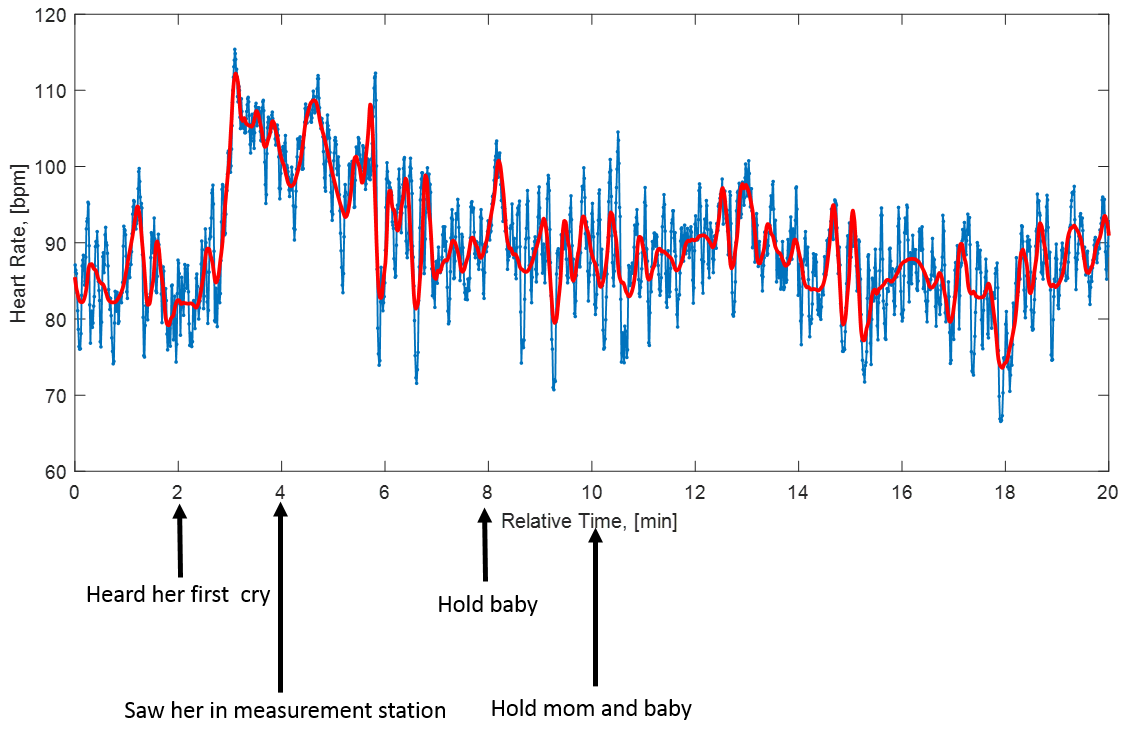It is so cool to be a biomedical data scientist. Besides working on topics that can have positive impacts on patients and their caregivers, you can do interesting data analyses! For the birth of my older daughter, I decided to record my heart rate and physiological stress response during the hospital stay (http://saman-parvaneh.com/blogf/87-rosefirstbirthday) to give to her and her mom as a first birthday gift! For my second daughter, I did it again! I didn’t want to hear from her (later when she speaks!) that “Dad, you didn’t capture your emotion during my birth.”
So, I decided to do the same experiment during her birth and match it with the events in the operation room! To be honest, I was so concerned when I was analyzing the data. What if my experienced emotion is different from her sister’s birth! What should I tell her!? When I got my average heart rate during the time that we were in the delivery room (figure below), I took a deep breath! The pattern of physiological response and events in the operation room were similar (not identical!) to my first experience.

Before she was born, I showed high stress (calm index*= 25%) and hearing her cry reduced my stress (calm index*= 66%). Happy birthday honey and thank you for bringing smiles to our face! I am so proud to be entitled as a father and looking forward to celebrating many more happy events with you, your sister, and of course your mom.
* Calm Index is created based on the comparison of stress level with respect to baseline recorded in the relaxed state. 100% is extremely relaxed and 0% is extremely stressed.


